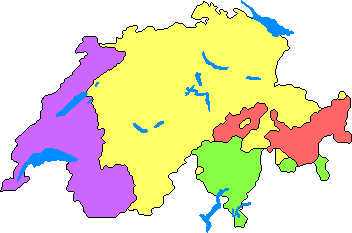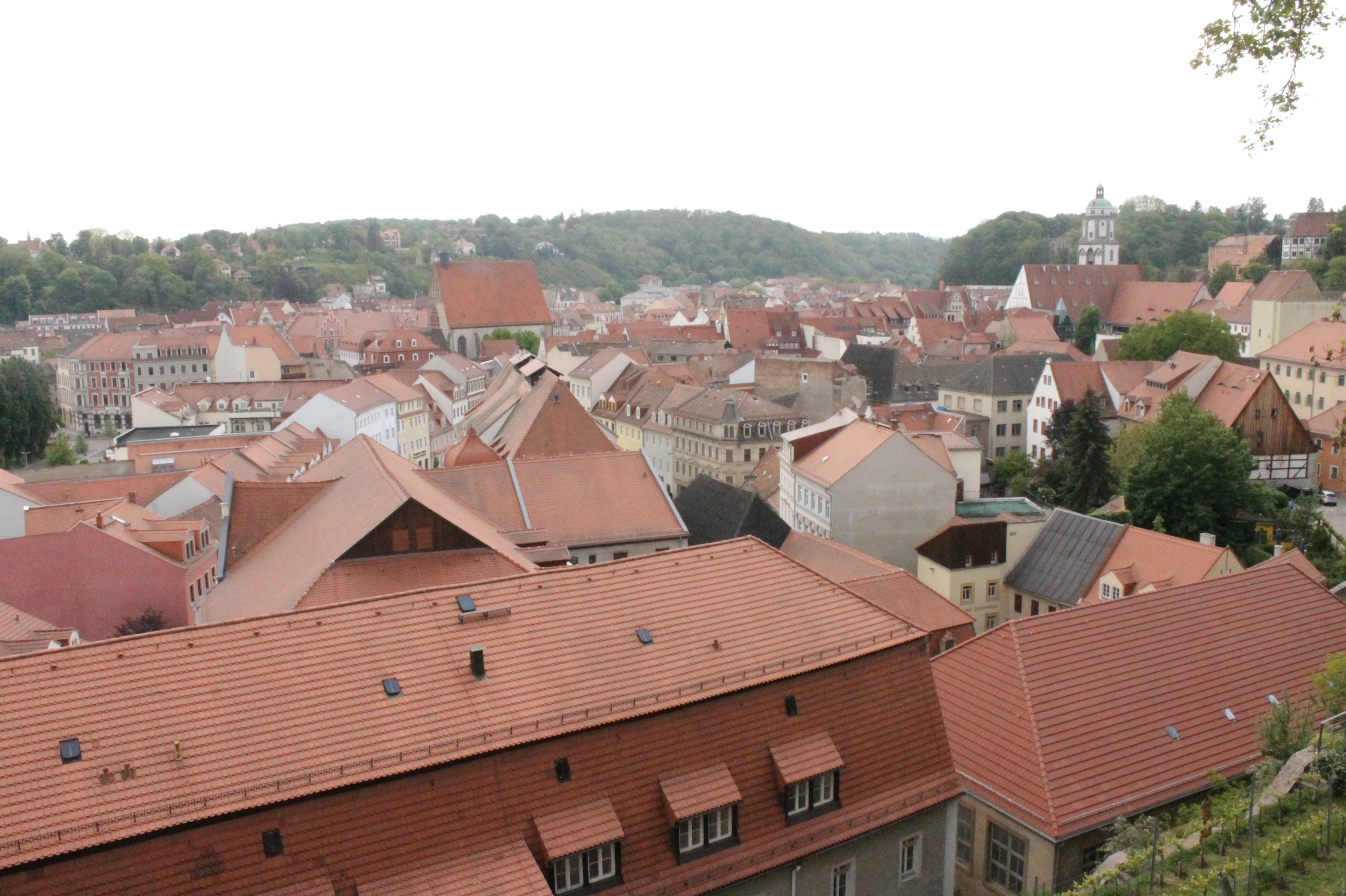|
Austrian High German
Austrian German (german: Österreichisches Deutsch), Austrian Standard German (ASG), Standard Austrian German (), or Austrian High German (), is the variety of Standard German written and spoken in Austria. It has the highest sociolinguistic prestige locally, as it is the variation used in the media and for other formal situations. In less formal situations, Austrians use Bavarian and Alemannic dialects, which are traditionally spoken but rarely written in Austria. History Austria German has its beginning in the mid-18th century, when Empress Maria Theresa and her son Joseph II introduced compulsory schooling in 1774, and several reforms of administration in their multilingual Habsburg Empire. At the time, the written standard was ''Oberdeutsche Schreibsprache'' ( Upper German written language), which was highly influenced by the Bavarian and Alemannic dialects of Austria. Another option was to create a new standard based on the Southern German dialects, as proposed by t ... [...More Info...] [...Related Items...] OR: [Wikipedia] [Google] [Baidu] |
Austria
Austria, , bar, Östareich officially the Republic of Austria, is a country in the southern part of Central Europe, lying in the Eastern Alps. It is a federation of nine states, one of which is the capital, Vienna, the most populous city and state. A landlocked country, Austria is bordered by Germany to the northwest, the Czech Republic to the north, Slovakia to the northeast, Hungary to the east, Slovenia and Italy to the south, and Switzerland and Liechtenstein to the west. The country occupies an area of and has a population of 9 million. Austria emerged from the remnants of the Eastern and Hungarian March at the end of the first millennium. Originally a margraviate of Bavaria, it developed into a duchy of the Holy Roman Empire in 1156 and was later made an archduchy in 1453. In the 16th century, Vienna began serving as the empire's administrative capital and Austria thus became the heartland of the Habsburg monarchy. After the dissolution of the H ... [...More Info...] [...Related Items...] OR: [Wikipedia] [Google] [Baidu] |
Alemannic Dialects
Alemannic, or rarely Alemannish (''Alemannisch'', ), is a group of High German dialects. The name derives from the ancient Germanic tribal confederation known as the Alamanni ("all men"). Distribution Alemannic dialects are spoken by approximately ten million people in several countries: * In Europe: ** Switzerland: all German-speaking parts of the country except Samnaun ** Germany: centre and south of Baden-Württemberg, Swabia, and certain districts of Bavaria ** Austria: Vorarlberg, Reutte District of Tyrol ** Liechtenstein ** France: Alsace region ( Alsatian dialect) and in some villages of the Phalsbourg county, in Lorraine ** Italy: Gressoney-La-Trinité, Gressoney-Saint-Jean, Issime, Alagna Valsesia, Rimella and Formazza, in some other villages almost extinct *Outside Europe: ** United States: Allen and Adams County, Indiana, by the Amish there and also in their daughter settlements in Indiana and other U.S. states. ** Venezuela: Colonia Tovar (Colonia Tovar dialect) ... [...More Info...] [...Related Items...] OR: [Wikipedia] [Google] [Baidu] |
German Orthography Reform Of 1996
The German orthography reform of 1996 (') was a change to German spelling and punctuation that was intended to simplify German orthography and thus to make it easier to learn, without substantially changing the rules familiar to users of the language. The reform was based on an international agreement signed in Vienna in July 1996 by the governments of the German-speaking countries—Germany, Austria, Liechtenstein and Switzerland. Luxembourg did not participate despite having German as one of its three official languages: it regards itself "as a non-German-speaking country not to be a contributory determinant upon the German system of spelling", though it did eventually adopt the reform. The reformed orthography became obligatory in schools and in public administration. However, there was a campaign against the reform, and in the resulting public debate the Federal Constitutional Court of Germany was called upon to delineate the extent of reform. In 1998 the court stated that ... [...More Info...] [...Related Items...] OR: [Wikipedia] [Google] [Baidu] |
Linguistic Prescription
Linguistic prescription, or prescriptive grammar, is the establishment of rules defining preferred usage of language. These rules may address such linguistic aspects as spelling, pronunciation, vocabulary, syntax, and semantics. Sometimes informed by linguistic purism, such normative practices often suggest that some usages are incorrect, inconsistent, illogical, lack communicative effect, or are of low aesthetic value, even in cases where such usage is more common than the prescribed usage. They may also include judgments on socially proper and politically correct language use. Linguistic prescriptivism may aim to establish a standard language, teach what a particular society or sector of a society perceives as a correct or proper form, or advise on effective and stylistically felicitous communication. If usage preferences are conservative, prescription might appear resistant to language change; if radical, it may produce neologisms. Prescriptive approaches to language are of ... [...More Info...] [...Related Items...] OR: [Wikipedia] [Google] [Baidu] |
Federal Ministry Of Education, Arts And Culture
The Ministry of Education (German: ''Bundesministerium für Bildung, Wissenschaft und Forschung'', ''Bildungsministerium'', historically also ''Unterrichtsministerium'') is the government ministry of Austria in charge of public schools and academic institutions. The current head of the Ministry is Martin Polaschek. The ministry was first created in 1848 as the Ministry of Public Schools (''Ministerium für öffentlichen Unterricht''). As of 2018, the agency's official name is Ministry of Education, Science and Research (''Bundesministerium für Bildung, Wissenschaft und Forschung'' or ''BMBWF''). Responsibilities The Ministry is responsible for all matters regarding public education, including general education, vocational preparatory schools, Adult education, educational research and the Pedagogical Universities. History The Ministry was first founded in 1848 in the wake of the Bourgeois revolution. Back then, it was named "Ministry for Cultus and Education" and included r ... [...More Info...] [...Related Items...] OR: [Wikipedia] [Google] [Baidu] |
Österreichisches Wörterbuch
The ''Österreichisches Wörterbuch'' (English: Austrian Dictionary), abbreviated ''ÖWB'', is the official spelling dictionary of the German language in the Republic of Austria. It is edited by a group of linguists under the authority of the Austrian Federal Ministry of Education, Arts and Culture (''Bundesministerium für Unterricht, Kunst und Kultur'') and contains a number of terms unique to Austrian German or that are more frequently used or differently pronounced there. A considerable amount of this "Austrian" vocabulary is also common in Southern Germany, especially Bavaria, and some of it is used in Switzerland as well. The most recent edition is the 43rd from 2017. Since the 39th edition from 2001 the orthography of the ''ÖWB'' was adjusted to the German spelling reform of 1996. This dictionary is also in official use in the Italian province of South Tyrol. History The first edition of the Austrian Dictionary was edited in 1951 on an initiative from the then Austrian m ... [...More Info...] [...Related Items...] OR: [Wikipedia] [Google] [Baidu] |
Joseph Von Sonnenfels
Joseph Freiherr von Sonnenfels (1732 – 25 April 1817) was an Austrian and German jurist and novelist. He was among the leaders of the Illuminati movement in Austria, and a close friend and Patronage, patron of Wolfgang Amadeus Mozart, Mozart. He is also the dedicatee of Ludwig van Beethoven's Piano Sonata No. 15 (Beethoven), Piano Sonata No. 15, Op. 28, which was published in 1801. Life He was born in Mikulov, Nikolsburg/Mikulov, Moravia, a son of Perlin Lipmann (1705–1768), chief rabbi of Brandenburg. Perlin Lipmann and his children converted to Catholicism some time between 1735–1741. Joseph, who was baptized in his early youth, received his elementary education at the Gymnasium (school), gymnasium of his native town Nikolsburg, and then studied philosophy at the University of Vienna. In 1749, he joined the regiment "Deutschmeister" as a private, advancing to the rank of corporal. On his discharge in 1754, he took a course in law at the University of Vienna and established ... [...More Info...] [...Related Items...] OR: [Wikipedia] [Google] [Baidu] |
Swiss German
Swiss German (Standard German: , gsw, Schwiizerdütsch, Schwyzerdütsch, Schwiizertüütsch, Schwizertitsch Mundart,Because of the many different dialects, and because there is no defined orthography for any of them, many different spellings can be found. and others) is any of the Alemannic dialects spoken in the German-speaking part of Switzerland and in some Alpine communities in Northern Italy bordering Switzerland. Occasionally, the Alemannic dialects spoken in other countries are grouped together with Swiss German as well, especially the dialects of Liechtenstein and Austrian Vorarlberg, which are closely associated to Switzerland's. Linguistically, Alemannic is divided into Low, High and Highest Alemannic, varieties all of which are spoken both inside and outside Switzerland. The only exception within German-speaking Switzerland is the municipality of Samnaun, where a Bavarian dialect is spoken. The reason Swiss German dialects constitute a special group is their a ... [...More Info...] [...Related Items...] OR: [Wikipedia] [Google] [Baidu] |
Swiss High German
Swiss Standard German (german: Schweizer Standarddeutsch), or Swiss High German (german: Schweizer Hochdeutsch or ''Schweizerhochdeutsch''), referred to by the Swiss as ''Schriftdeutsch'', or ''Hochdeutsch'', is the written form of one of four official languages in Switzerland, besides French, Italian and Romansh. It is a variety of Standard German, used in the German-speaking part of Switzerland and Liechtenstein. It is mainly written, and rather less often spoken. Swiss Standard German differs from Swiss German, an umbrella term for the various Alemannic German dialects (in the sense of "traditional regional varieties") that are the default everyday languages in German-speaking Switzerland. German is a pluricentric language. In contrast with other local varieties of German, Swiss Standard German has distinctive features in all linguistic domains: not only in phonology, but also in vocabulary, syntax, morphology and orthography. These characteristics of Swiss Standard German ... [...More Info...] [...Related Items...] OR: [Wikipedia] [Google] [Baidu] |
Dresden
Dresden (, ; Upper Saxon: ''Dräsdn''; wen, label=Upper Sorbian, Drježdźany) is the capital city of the German state of Saxony and its second most populous city, after Leipzig. It is the 12th most populous city of Germany, the fourth largest by area (after Berlin, Hamburg and Cologne), and the third most populous city in the area of former East Germany, after Berlin and Leipzig. Dresden's urban area comprises the towns of Freital, Pirna, Radebeul, Meissen, Coswig, Radeberg and Heidenau and has around 790,000 inhabitants. The Dresden metropolitan area has approximately 1.34 million inhabitants. Dresden is the second largest city on the River Elbe after Hamburg. Most of the city's population lives in the Elbe Valley, but a large, albeit very sparsely populated area of the city east of the Elbe lies in the West Lusatian Hill Country and Uplands (the westernmost part of the Sudetes) and thus in Lusatia. Many boroughs west of the Elbe lie in the foreland of the Ore Mounta ... [...More Info...] [...Related Items...] OR: [Wikipedia] [Google] [Baidu] |
Meißen
Meissen (in German orthography: ''Meißen'', ) is a town of approximately 30,000 about northwest of Dresden on both banks of the Elbe river in the Free State of Saxony, in eastern Germany. Meissen is the home of Meissen porcelain, the Albrechtsburg castle, the Gothic Meissen Cathedral and the Meissen Frauenkirche. The ''Große Kreisstadt'' is the capital of the Meissen district. Names * german: Meißen * french: Meissen, ou, selon l'orthographe allemande: ''Meißen''; en français suranné: ''Misnie'' * la, Misnia, Misena, Misnensium * pl, Miśnia * cs, Míšeň * hsb, Mišno * dsb, Mišnjo * zh, 迈森 (pinyin: ) History Meissen is sometimes known as the "cradle of Saxony". It grew out of the early West Slavic settlement of ''Misni'' inhabited by Glomatians and was founded as a German town by King Henry the Fowler in 929. In 968, the Diocese of Meissen was founded, and Meissen became the episcopal see of a bishop. The Catholic bishopric was suppressed in 1581 after t ... [...More Info...] [...Related Items...] OR: [Wikipedia] [Google] [Baidu] |



